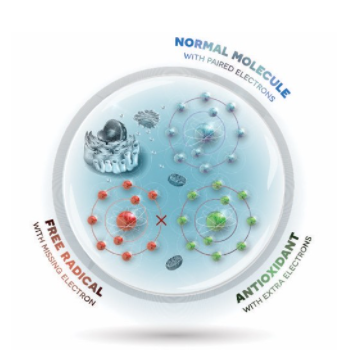The debate about what you should eat in order to live the longest, healthiest life possible has swung back and forth for years between two poles: high protein, low carbohydrate diets versus low fat, primarily plant-based diets. Both claim to help you maintain optimal weight and healthy hearts for longevity.
In the center is the Mediterranean diet based on eating fruits, vegetables and grains along with fish and white meat. Additionally, it includes liberal amounts of olive oil and nuts to provide “good” fats. The Mediterranean diet also allows wine and thus many find it easier to follow!
Several long-term studies analyzing thousands of people at risk to develop heart disease have come up with some definitive results. Using specific markers for inflammation and high blood pressure, the research shows that those people with the highest quantity of polyphenols in their diets had the lowest inflammation, lowest blood pressure, and healthiest cholesterol levels. Surprise, surprise ~ they also lived the longest. So, let’s look at polyphenols, what they do for you and how to get over 1500 mg a day in your diet!

Polyphenols = antioxidants
We’re all familiar with the term antioxidants, and we know we’ll benefit from consuming lots of them. Most of us probably know that antioxidants fight free radicals which can damage your cells, your DNA and proteins. Free radicals cause cellular aging and even cancer by altering the cell’s DNA. Antioxidants prevent free radical damage by stabilizing cellular metabolism.
Thus, you want to be awash in antioxidants especially when you’re exposed to toxins or under stress. The FDA in its infinite wisdom has determined that food and beverage companies are only allowed to call out antioxidants on labels if there is sufficient vitamin A, C and/or E in a serving portion. These vitamins are extremely important antioxidants, without a doubt. However, there is another group of just as important antioxidants that the FDA is ignoring. This group consists of the polyphenols found in abundance in plants.
Plant polyphenols are molecules that protect plants as well as humans who eat them. There are thousands of polyphenol compounds, some of which are unique to certain plants and others of which are shared across many plants. Eating a plant-based diet including fruits, vegetables, legumes and whole grains gives you a daily dose of a wide variety of polyphenols!
A colorful diet
The Mediterranean diet encourages the consumption of all these plants as opposed to some diets that restrict certain groups like grains or legumes. Rather than narrowing what plants you will or won’t eat, think about different ways to increase the diversity of plants in your diet which you still can do despite sensitivities to gluten or other allergens.
 Focusing on the rich colors of foods guarantees you’ll consume lots of polyphenols. For instance, anthocyanins are a group of polyphenols that are famous for the red, purple and blue colors they give to fruits and vegetables. Think eggplants, red wine and berries. Anthocyanins have been shown in numerous studies to help prevent heart disease, slow cognitive decline, and protect against cancer. Another group of polyphenols, proanthocyanidins, found in brown cinnamon, pine bark, hazelnuts, cacao beans and red cranberries, strengthen blood vessels and help repair the skin’s collagen and elastin while protecting against sun damage. Eat a rainbow of colors at every meal and you will be sure to get a diverse groups of polyphenols!
Focusing on the rich colors of foods guarantees you’ll consume lots of polyphenols. For instance, anthocyanins are a group of polyphenols that are famous for the red, purple and blue colors they give to fruits and vegetables. Think eggplants, red wine and berries. Anthocyanins have been shown in numerous studies to help prevent heart disease, slow cognitive decline, and protect against cancer. Another group of polyphenols, proanthocyanidins, found in brown cinnamon, pine bark, hazelnuts, cacao beans and red cranberries, strengthen blood vessels and help repair the skin’s collagen and elastin while protecting against sun damage. Eat a rainbow of colors at every meal and you will be sure to get a diverse groups of polyphenols!
Drinking polyphenols

Drinking water infused with herbs, spices, leaves, flowers and roots is another way to get more polyphenols from a wide variety of plants on a daily basis. Why drink just plain water when you can use your liquid refreshment to provide you with unique polyphenols?
Polyphenols are water soluble. That makes it possible to test for polyphenols in the urine, which is exactly what the aforementioned studies did to discover who ate the most polyphenols.Those people with the highest levels of polyphenols in their urine had the lowest levels of inflammation after analyzing five important inflammatory markers. They also had the lowest blood pressure with significantly increased levels of the good HDL cholesterol.
One study that followed over 800 men and women for 12 years found that those with the highest levels of polyphenols in their urine at the start of the study had the lowest mortality rate compared to those who started with the lowest amounts of polyphenols.
Their epithelial cells produced the highest levels of nitric oxide, which keeps our blood vessels relaxed and is associated with healthy hearts and increased longevity.
Using the age-old simple methods of brewing or steeping plants in hot water, many unique water-soluble polyphenols end up in your cup of tea, coffee, and herbal beverages like Teeccino. The health benefits you read about from studies of tea and coffee drinkers? They’re coming from the polyphenols and their antioxidant capacities. If you drink a wide variety of herbal teas, which typically are made from many different botanicals, you’ll both increase your intake and have a greater diversity of polyphenols in your diet.
For instance, if you look at spices, you’ll find their antioxidant capacities are extraordinarily high compared to anything else you consume. Aromatic herbs like peppermint, and roasted herbs like ramón seeds and dandelion roots all contribute potent polyphenols to your cup. Rooibos tea has a unique polyphenol, aspalathin, not found in any other plant, which has been studied extensively and shown to produce numerous health benefits. The number of plants we use for food is much more limited than it was in our hunting and gathering days when we were dependent on wild plants as our food source. Drinking herbal beverages can compensate for the relatively smaller number of plants we consume compared to our ancestors!
Polyphenols and the microbiome
One more thing: if you’ve been following my blog posts lately, you‘ll have read about the science that shows how important it is to consider the foods we eat in light of how they support a healthy microbiome in our gut “Feeding your Probiotics..” It turns out that only 5-10% of polyphenols are absorbed in our small intestines. What happens to the rest? They become food for the microbiota inhabiting our large intestines (i.e., our colons). They’re digested and turned into metabolites that improve our health in so many ways that the study of the microbiome is changing the way medicine will be practiced. While scientists figure out how to develop new treatments using these microbes to improve our health and reverse chronic diseases, you can create a thriving community of beneficial microbes by eating a wide variety of plants to increase your polyphenol consumption!
Now for a trip to the Mediterranean!


